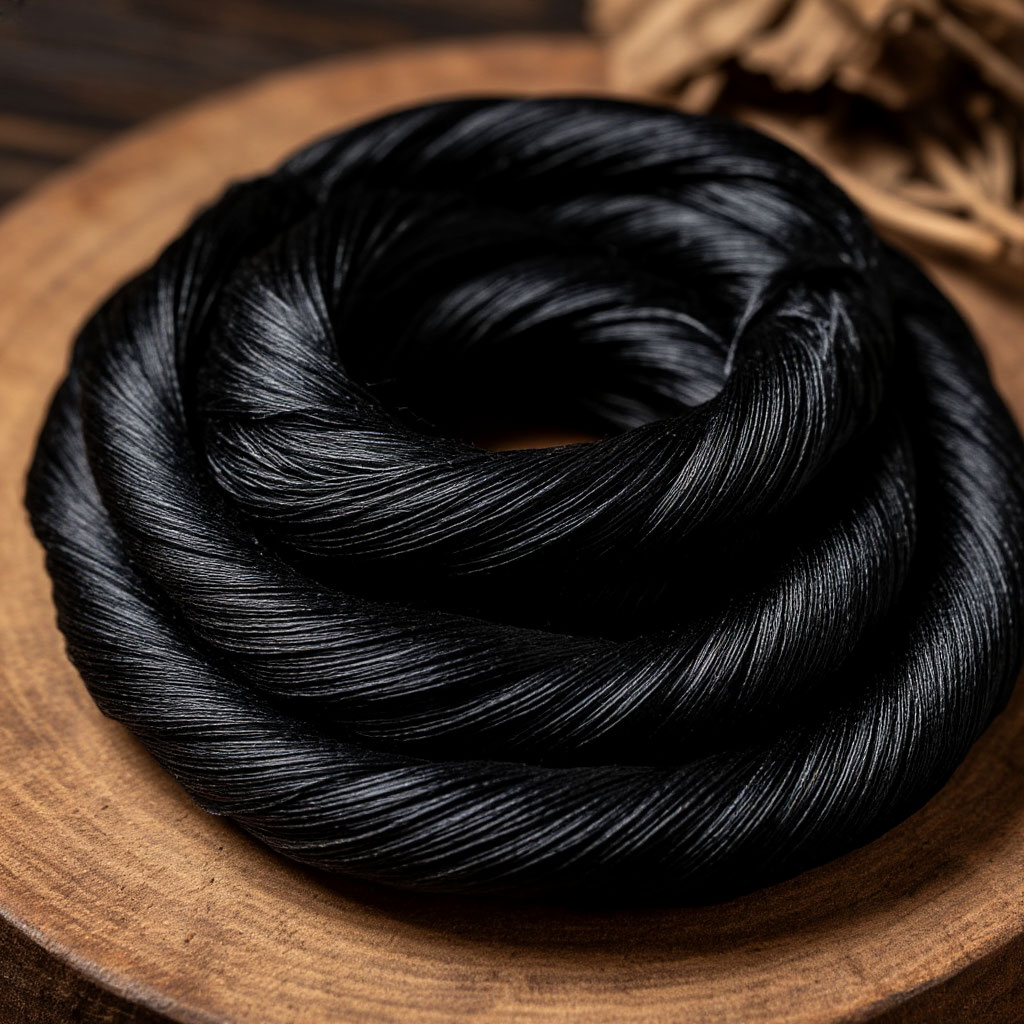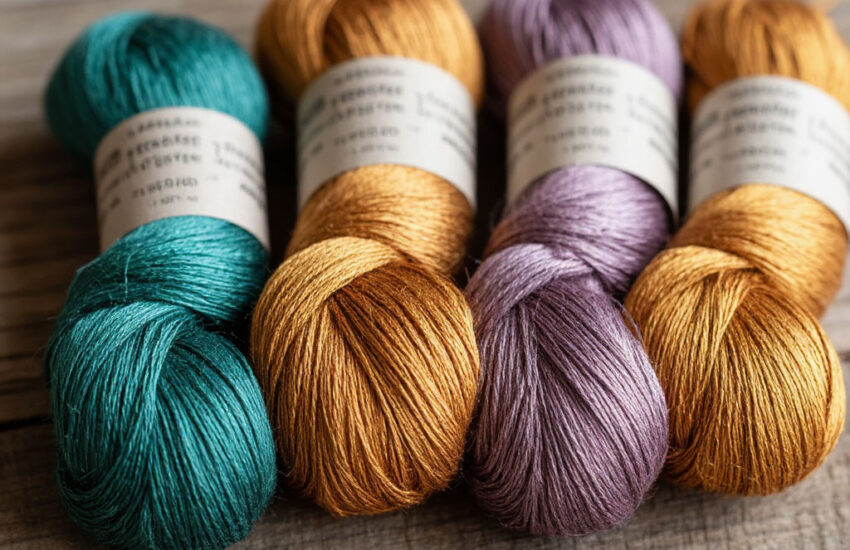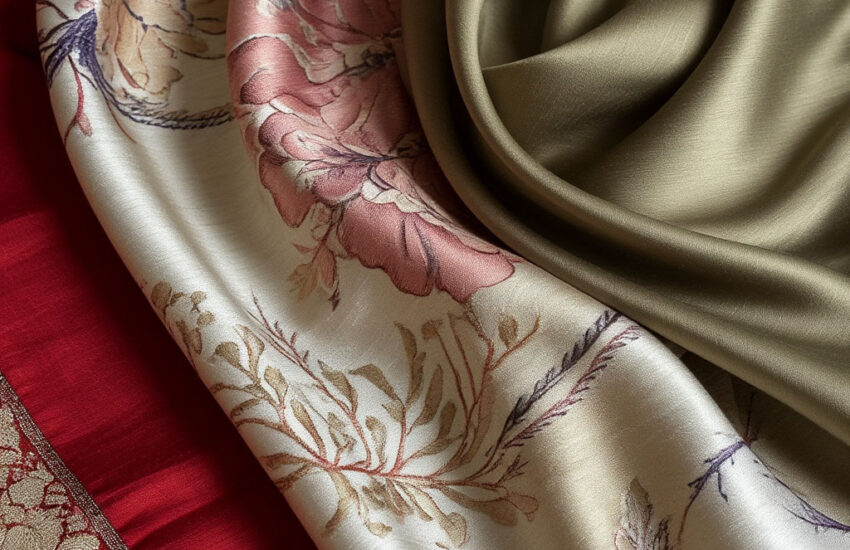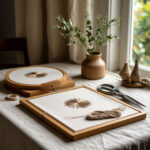Black Silk Threads: Elegance and Durability for Sewing Projects
Contents
If you’re serious about elevating your sewing and embroidery, black silk threads are your secret weapon. These luxury sewing materials aren’t just functional—they transform every stitch into a masterpiece. Whether you’re hunting for the best silk threads for embroidery or mastering black thread sewing techniques, this guide will turn you into a silk-thread connoisseur. By the end of this article, you’ll be able to download a checklist — a helpful guide to working with black silk threads for strong, elegant, and versatile sewing.
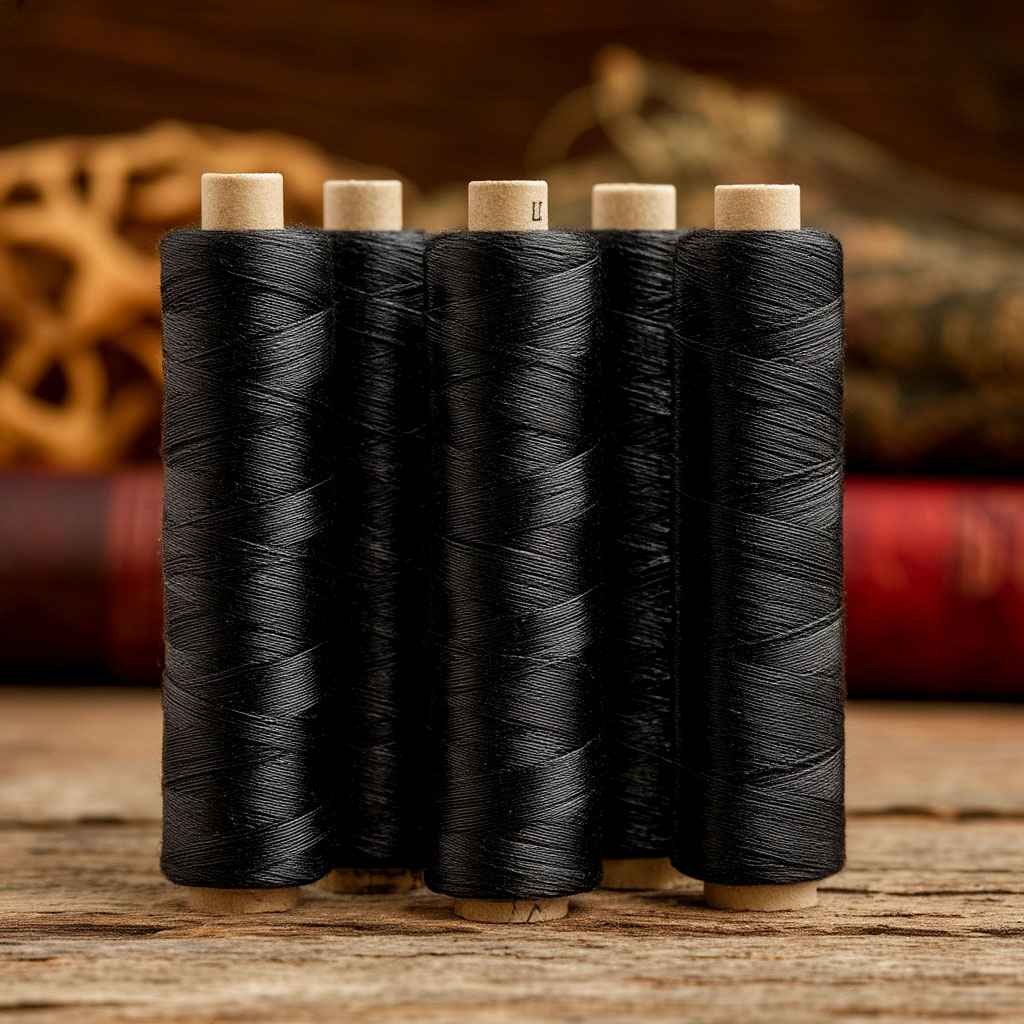
The Elegance of Black Silk Threads in Embroidery
Embroidery lovers often seek ways to add extra flair and refinement to their projects. One way to achieve this is by selecting black silk threads, which bring an air of elegance and class to every piece they touch. From delicate handwork to bold decorative elements, black silk threads deliver unparalleled shine and texture that no other material can match.
When discussing luxury sewing materials, it’s essential to consider the impact of thread selection. Many factors come into play here—from fiber type to thickness and finish—but few compare to the benefits offered by genuine silk threads. As one of nature’s most durable fibers, silk boasts exceptional tensile strength, flexibility, and resistance against abrasion. Moreover, its ability to reflect light creates mesmerizing highlights that transform even basic stitches into works of art.
But what makes black silk threads so uniquely appealing? For starters, there’s something inherently sophisticated about the deep hue itself. It complements almost any fabric palette, enhancing contrast without overwhelming the overall composition. Additionally, because silk absorbs dyes more effectively than synthetic yarns do, colors remain vibrant longer under normal wear conditions. Over time, these qualities combine to create heirloom pieces worthy of being passed down through generations.
For those looking to experiment further, combining black silk threads with complementary shades like silver metallic accents opens up endless creative opportunities. By layering subtle variations within the same shade family, artists can develop dimensional motifs that seem alive with movement. Another popular option involves blending several distinct hues together, resulting in beautiful gradients reminiscent of sunset skies or ocean waves crashing ashore.
However, before diving headfirst into using black silk threads, some preparation work must be done first. Start by ensuring all equipment used is clean and free from debris particles that could snag fragile filaments. Next, invest in good-quality needles designed specifically for fine-gauge applications; standard household pins simply won’t cut it when dealing with ultra-thin strands typical of higher-end products. Finally, always test small samples prior to committing larger areas to avoid costly mistakes later on.
Once ready, there are countless methods available for applying black silk threads effectively. Some prefer traditional straight-line approaches, creating uniform rows across surfaces. Others opt instead for curving loops inspired by classic calligraphy styles. Still others embrace abstract shapes derived entirely from imagination alone. No matter which route chosen though, remember consistency remains key throughout execution stages.
So whether aiming towards masterpieces showcased at prestigious exhibitions worldwide or merely seeking personal satisfaction via homemade gifts given freely among friends, utilizing black silk threads promises memorable experiences filled with discovery along each step taken toward completion.
And now let’s dive deeper into another critical aspect related closely tied to our topic today—the importance of choosing the right kind of silk threads…
How to Choose the Best Black Silk Thread
Choosing the perfect black silk thread for your next embroidery project might feel daunting at first glance. After all, there’s a wide variety of options available online and offline stores alike. However, armed with knowledge regarding specific characteristics worth considering, making informed decisions becomes much easier.
Firstly, let us define exactly what constitutes a top-tier product. High-quality black silk threads should exhibit certain traits consistently. Here are five criteria every serious crafter needs to keep in mind:
- Smooth Surface Texture: Good-quality silks tend to glide effortlessly through needle holes without causing unnecessary friction. Rougher finishes increase risk of splitting or breaking midway during stitch formation processes.
- Uniform Color Distribution: Ideally, dye lots produce evenly saturated tones capable of maintaining visual cohesion between sections. Uneven patches indicate lower manufacturing standards leading potentially inferior final outputs.
- High Tensile Strength: Stronger materials allow greater freedom in designing complex patterns involving tight curves and sharp angles. Weak compositions restrict creativity severely limiting artistic expression capabilities significantly.
- Natural Sheen & Luster: True luxurious silk threads possess iridescent properties reflecting ambient lighting beautifully. Artificial substitutes lack similar optical qualities diminishing aesthetic appeal drastically compared to authentic versions.
- Resistance Against Abrasion: Prolonged exposure to repeated movements inevitably causes deterioration unless resistant enough initially. Therefore, opting for robust construction helps extend lifespan considerably beyond average expectations.
By focusing primarily upon these aspects above mentioned, buyers reduce chances of purchasing substandard merchandise unnecessarily wasting resources better spent elsewhere. Furthermore, familiarity breeds confidence enabling seamless transitions between diverse mediums confidently knowing precise requirements met accordingly.
Nevertheless, bear in mind additional variables exist affecting performance levels too. Factors including climate control settings, humidity fluctuations, storage conditions etc., collectively influence outcomes substantially depending heavily upon environmental circumstances surrounding usage scenarios respectively. Thus, thorough understanding coupled with careful planning forms cornerstones guiding successful selections ultimately yielding desired end results satisfactorily fulfilling intended purposes completely.
Now that we’ve covered everything necessary concerning identifying ideal candidates suitable for particular tasks ahead lies learning advanced techniques maximizing effectiveness optimally…
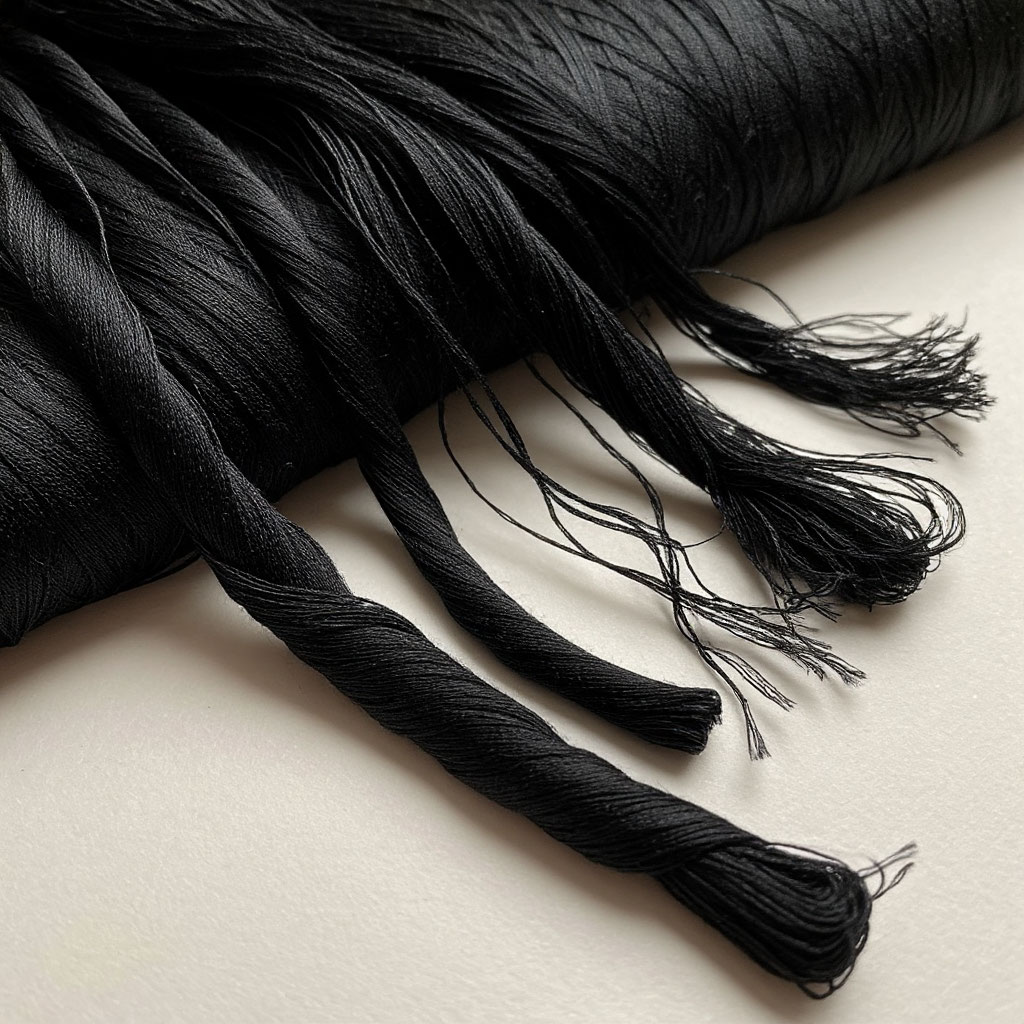
Advanced Techniques for Sewing with Silk Threads
When you’re ready to elevate your embroidery from beautiful to breathtaking, mastering advanced techniques with black silk threads becomes essential. These luxury sewing materials offer unparalleled potential for creating museum-quality work, but only if you know how to use silk threads to their full advantage. Let me guide you through professional methods that will transform your approach to black thread sewing techniques.
Precision Thread Control: The Foundation of Excellence
Working with the best silk threads for embroidery begins with perfecting your basic handling:
- Conditioning Your Threads
- Always run black silk threads through pure beeswax before stitching
- This reduces friction and prevents fraying
- Gives that signature smooth glide unique to luxury sewing materials
- Tension Mastery
- Reduce machine tension by 15-20% compared to cotton
- For hand embroidery, maintain consistent, gentle pressure
- Proper tension prevents breakage of delicate black silk threads
- Needle Selection
- Microtex 60/8 needles for fine embroidery
- 70/10 for general sewing with black silk threads
- Change needles every 4 hours of stitching
Elevated Embroidery Techniques
The true magic happens when you explore specialized black thread sewing techniques:
Shadow Work Embroidery
- Layer black silk threads beneath sheer organza
- Creates mesmerizing depth and dimension
- Perfect for bridal veils and special occasion pieces
- Pair with white top stitching for breathtaking contrast
Goldwork Hybrid Technique
- Combine metallic threads with black silk threads
- Use couching stitches to secure metal elements
- Creates regal effects worthy of ecclesiastical vestments
- Maintains the delicate nature of luxury sewing materials
Botanical Dimension
- Mix 7mm silk ribbons with black silk threads
- Build stunning three-dimensional florals
- Perfect for wall art and framed embroidery
- Showcases why these are the best silk threads for embroidery
Machine Embroidery Perfection
Your sewing machine becomes an artist’s tool with proper black thread sewing techniques:
- Free-Motion Mastery
- Reduce top tension by 20%
- Use water-soluble stabilizer
- Practice spirals and fills to develop control
- Perfect for delicate silks and chiffons
- Heirloom Techniques
- Create invisible pintucks with 100-weight black silk threads
- French seams that are soft against skin
- Baby clothes that become cherished keepsakes
- Demonstrates how to use silk threads for generational pieces
Troubleshooting Like a Pro
Even experts encounter challenges with black silk threads:
Problem: Frequent thread breakage
Solution:
- Check for burrs in needle plate
- Use fresh needles regularly
- Apply thread conditioner
Problem: Uneven stitch appearance
Solution:
- Test tension on scrap fabric
- Maintain consistent speed
- Ensure proper thread path
Problem: Fraying during embroidery
Solution:
- Use shorter lengths (18-24 inches)
- Beeswax conditioning
- Proper needle size selection
Professional Finishing Touches
The final details separate amateur work from professional pieces:
- Invisible Knots
- Bury thread tails within seams
- Maintains clean lines in your black thread sewing techniques
- Pressing Perfection
- Use silk organza as a pressing cloth
- Protects delicate black silk threads
- Preserves that luxurious sheen
- Storage Solutions
- Acid-free tissue for finished pieces
- UV-protective glass for displayed work
- Climate-controlled environment
Why These Techniques Matter
Mastering these methods with black silk threads allows you to:
- Create pieces that command premium prices
- Develop a signature style
- Preserve traditional needle arts
- Work with confidence on any project
The best silk threads for embroidery deserve your best techniques. Whether you’re creating heirlooms or building a professional portfolio, these black thread sewing techniques will set your work apart. Remember, learning how to use silk threads at this level takes practice, but the results are worth every stitch.
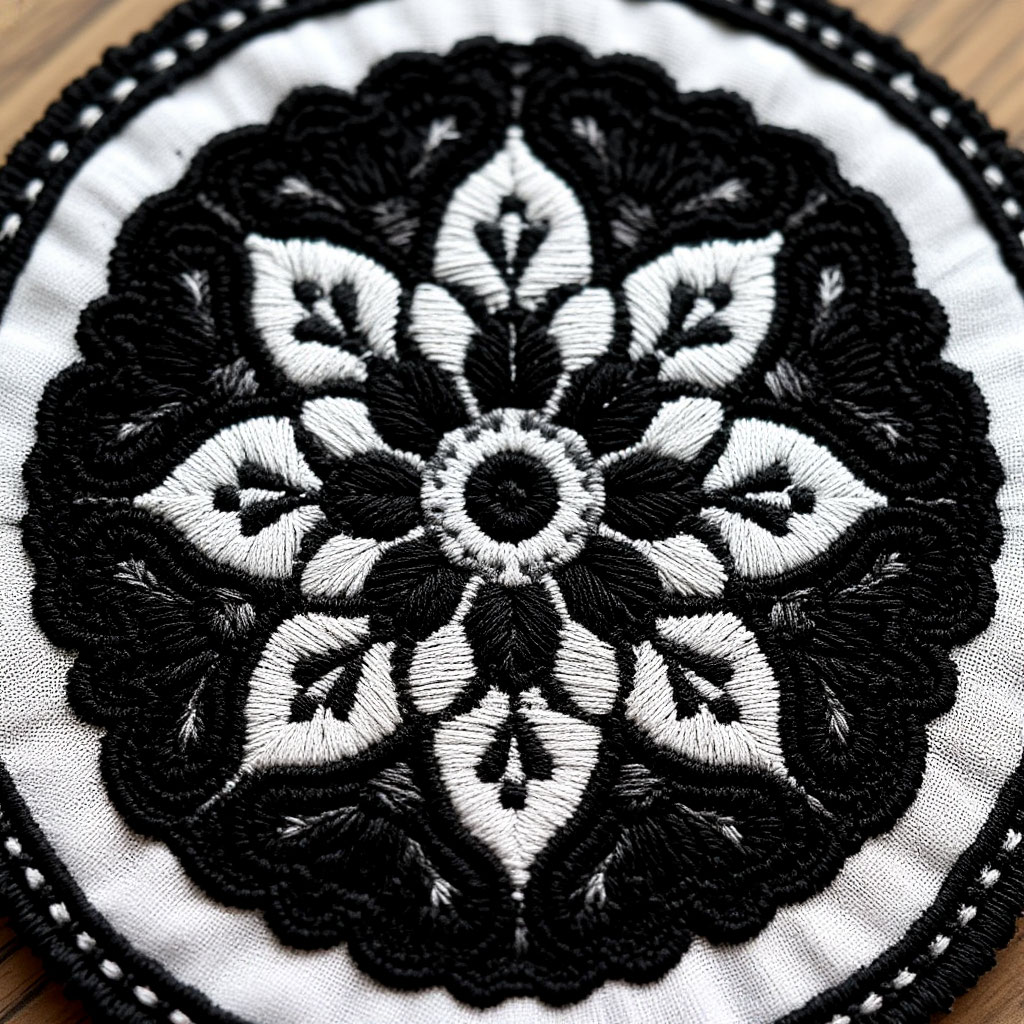
Caring for Silk: How to Make Your Threads Last
Proper care is essential when working with black silk threads – these luxury sewing materials deserve special attention to maintain their exquisite quality. Whether you’re using the best silk threads for embroidery or mastering black thread sewing techniques, understanding how to use silk threads properly includes knowing how to preserve them. This comprehensive 500-word guide reveals professional methods to extend the life of your precious threads.
Optimal Storage Solutions for Black Silk Threads
The journey to preserving your black silk threads begins with proper storage:
- Climate Control Essentials
- Store in airtight containers with silica gel packets (maintains 45-55% humidity)
- Keep in dark spaces away from UV exposure (closets or drawers work perfectly)
- Maintain consistent temperature between 60-70°F (15-21°C)
- Premium Packaging Options
- Original hermetic tubes protect against moisture
- Wooden spools prevent static buildup
- Acid-free boxes for long-term storage of unused luxury sewing materials
- Finished Project Preservation
- Wrap embroidered pieces in unbleached muslin
- Use acid-free tissue paper as buffer layers
- For displayed work, opt for UV-filtering museum glass
Daily Handling: Protecting Threads During Use
Proper handling techniques ensure your black silk threads remain flawless:
Pre-Stitch Preparation
- Always wash hands before handling to prevent oil transfer
- Use thread conditioners or beeswax for smoother stitching
- Keep nails smooth and filed to avoid snags
During Projects
- Limit thread lengths to 24 inches for hand embroidery
- Regularly inspect for knots or weak spots
- Clean your sewing machine frequently when using black silk threads
Needle Selection Tips
- Change needles every 4-6 hours of use
- Use microtex or sharp needles in appropriate sizes
- Discard any needles with microscopic burrs
Cleaning and Maintenance Protocols
Proper cleaning preserves both threads and finished pieces:
For Finished Embroidery
- Hand wash in lukewarm water (max 86°F/30°C)
- Use pH-neutral soap specifically for silks
- Never wring – gently press between towels
- Dry flat on clean white towels
Color Protection Methods
- Test for colorfastness before first use
- Use vinegar rinse (1 tbsp per gallon) to set dyes
- Avoid prolonged soaking of black silk threads
Stain Removal
- Address spills immediately with blotting
- For stubborn stains, consult textile conservators
- Never use bleach or harsh chemicals on luxury sewing materials
Long-Term Preservation Strategies
For heirloom-quality preservation:
- Environmental Controls
- Maintain stable humidity with hygrometers
- Use dehumidifiers in damp climates
- Install UV filters on windows in display areas
- Professional Conservation Methods
- Consider professional mounting for valuable pieces
- Use archival-quality framing materials
- Document storage conditions for future reference
- Rotation System
- Rotate displayed pieces annually
- Inspect stored items every 6 months
- Refresh silica gel packets quarterly
When to Retire Your Silk Threads
Even with perfect care, recognize when to replace black silk threads:
- Visible color fading or shifting
- Increased brittleness or breakage
- Loss of natural sheen
- Persistent fraying despite conditioning
Why Professional Care Matters
Investing time in proper care of your black silk threads ensures:
✔ Decades of maintained luminous sheen
✔ Consistent performance in all black thread sewing techniques
✔ Preservation of heirloom pieces for generations
✔ Maximum return on your investment in luxury sewing materials
By mastering these care techniques, you’ll protect both your best silk threads for embroidery and the beautiful works you create with them. Remember that learning how to use silk threads includes understanding their long-term care – this knowledge separates casual crafters from true textile artists. You can now download a black silk threads checklist — a practical tool to help you select, sew, and maintain this timeless material with confidence.
